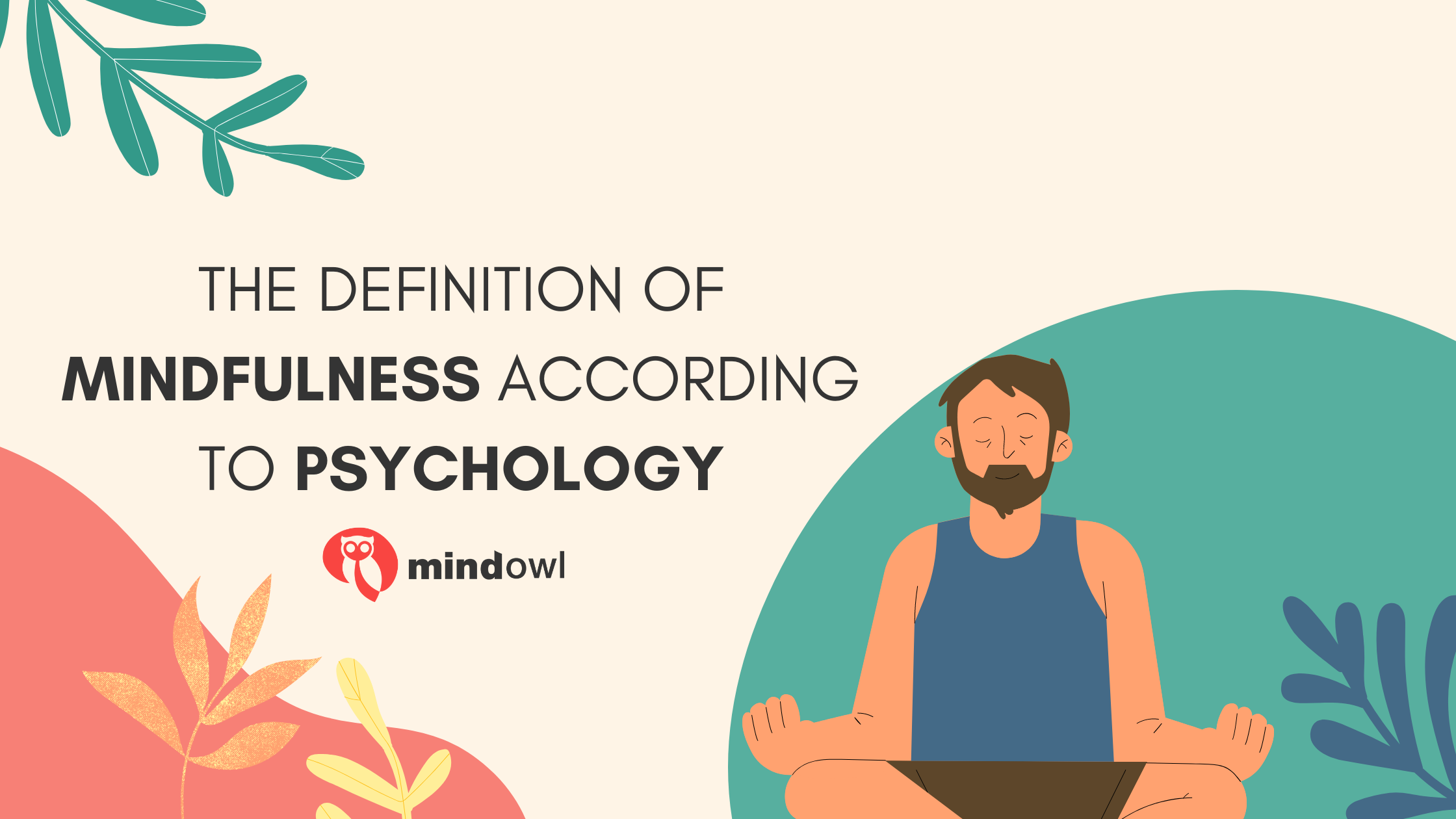Mindfulness practice has become increasingly mainstream in recent years, straying from its roots in Asia and growing in popularity in the West. Many people have embraced it as a part of their daily life, a practice that can significantly boost mental, physical, and emotional health. This development is partly due to changing beliefs about mindfulness within the world of psychology. So how do we define mindfulness today?
What is mindfulness?
Mindfulness is a word that has been used in spiritual contexts for centuries; however, it’s only in recent years that psychology has begun to study its effects on the mind seriously. These days, many psychologists and therapists incorporate aspects of mindfulness into their practices, harnessing its ability to tackle the psychological symptoms of anxiety, depression, and other issues. Nonetheless, how we define the term can still be somewhat confusing.
Put simply, mindfulness means being fully centred in the present moment, conscious of the senses, and in a state of awareness or concentration. Mindfulness meditation absorbs these principles within a practice which has the potential to significantly boost your well-being and quality of life. That being said, mindfulness doesn’t necessarily have to include formal meditation. By taking short pauses throughout your day to fully immerse yourself in sensory everyday activities like brushing your teeth or washing up, you are being mindful. By thinking deeply about the physical sensations, flavours and smells of a meal you’re eating, you’re practising mindfulness. Ultimately, the term means different things to different people.
Unsurprisingly then, opinions differ greatly on the best way to practise mindfulness. Some people are dead against the extraction of mindfulness from its ancient Buddhist context, arguing that “the mystification of mindfulness” is all about appropriating and repackaging it for white Western audiences, to its detriment. This debate shows how much attention mindfulness is getting from those within the worlds of psychology and science. But before we elaborate on what psychology has to say about mindfulness, let’s quickly dig into those Buddhist roots we’ve just mentioned.
Mindfulness in Buddhism
Western ideas surrounding mindfulness have strayed slightly from Buddhist tradition. Historically, a key element of mindfulness is that it is inherently ethical – overt efforts to live a wholesome everyday life are crucial to the Buddhist understanding of mindfulness. This view is less prominent today, but the principles of mindful awareness, concentration, and being present have remained core throughout.
The Buddhist concept of sati (meaning ‘awareness’ in Pali) is the root of what we call mindfulness today. According to Tse fu Kuan, sati has four different meanings:
- Simple awareness – applying bare attention from moment to moment (this is generally viewed as the common understanding of mindfulness in the West)
- Protective awareness – exerting control and restraint over the stimuli of the six sense modalities
- Introspective awareness – the vigilant monitoring of the present moment, ignoring the various mental states that “color” the mind constantly
- Deliberate awareness – the conscious effort to form inspiring conceptions
A wide range of other terms contribute to the Buddhist understanding of mindfulness, from Adhidhammic (which defines ‘attention’ as being present in all mental states), to Karuna (which refers to compassion and empathy). Broadly speaking, cultivating sati (which can be both a practice and a state) means developing self-awareness, understanding your own mental processes, and contributing positively to those around you. This Buddhist understanding of mindfulness seeks to underline how our ideas of human “suffering” are an illusion based on attachment to non-important things.
Many academics agree with the Buddhist view of mindfulness as a social practice that leads towards an “ethically minded awareness”. Practices in which the body and mind consciously interact, like body scanning, meditation and yoga are proven to increase both mental and physical health and well-being. But there are differences in how mindfulness is perceived; when trying to provide a definition, it’s important to compare Buddhist notions of sati with modern Western interpretations of the term.

The definition of Mindfulness in Psychology
Today, the beneficial effects of mindful awareness and present-centeredness on reducing anxiety, worry, fear, and rumination are well-established. However, most applications of mindfulness within Western psychology and medicine are relatively new, developed by medical professors like Jon Kabat-Zinn in the last few decades. Science’s adoption of mindfulness happened largely because of the growth of Zen Buddhism and transcendental meditation in the United States. Developments since have widened the gap between Buddhist and Western conceptualizations of mindfulness – but the benefits of practice still remain fairly similar.
Lykins and Baer’s study shows that mindfulness meditators experience higher levels of well-being, self-compassion and mindfulness than non-meditators, as well as being less likely to suffer from difficulties with emotional reactivity, rumination, thought suppression, or fear of emotion. This research is backed up by various other studies reinforcing the association of mindfulness with positive psychological and physical health.
Looking at research on mindfulness, one issue that regularly crops up is how we define the term. Psychologists have sometimes struggled to agree on an operational definition of mindfulness – but a few have summed it up pretty well. Ruth Baer defines mindfulness as “focusing one’s attention in a non-judgmental or accepting way on the experience occurring in the present moment”, and resisting “states of mind in which attention is focused elsewhere.” Perhaps a more succinct definition comes from psychologist Zindel Segal, who describes mindfulness as “A process of regulating attention in order to bring a quality of non-elaborative awareness to current experience”.
Most scientific definitions are linked by their focus on connection to the present moment/present reality. Awareness and concentration are pillars of this state of being. Receptivity is also crucial to the state of mindfulness. Dr. Ellen Langer writes, “Mindfulness is a flexible state of mind in which we are actively engaged in the present, noticing new things and sensitive to context, with an open, non-judgmental orientation to experience”. This definition captures the importance of being tuned in to changing circumstances.
We’ve taken a look at the varying psychological definitions of mindfulness, and how Western interpretations of the practice have moved away from its roots in Buddhism and spirituality. But what specific types of modern therapy and medical practice have been influenced by mindfulness? Let’s run through some key examples.
How mindfulness is used in therapy and psychology
The benefits of mindfulness include improved working memory, heightened metacognitive awareness (e.g. understanding your own mind), reduced anxiety and stress, and a greater ability to manage strong emotions and physical pain. Given these positive effects, it’s not exactly shocking that a number of mindfulness-based therapies have been embraced by the psychology community in recent decades.

Mindfulness-Based Stress Reduction (MBSR)
Founded by Jon Kabat-Zinn in the late 1970s, Mindfulness-Based Stress Reduction (MBSR) is a group-based program which asks individuals to accept their physical surroundings and experience without judgment, using mindfulness to combat stress and other conditions. Inspired by insight meditation, the practice blends aspects of Zen Buddhism with a more scientific perspective, deliberately moving away from the Buddhist roots of mindfulness in order to appeal to the masses. Its wide reach is underlined by the fact that it is now taught in prisons and poor inner-city areas, to medical students, and within corporate settings.
Mindfulness-Based Stress Reduction training can be very effective when used alongside traditional medical or psychological treatment. MBSR is used to treat various conditions including chronic pain, multiple sclerosis, and cancer, and has been proven to enhance the results of treatment related to anxiety and panic attacks, asthma, fatigue, grief, headaches, heart problems, and more. Mindfulness techniques adopted by the practice include Object Meditation, body scans, Awareness Mindfulness, and Walking Meditation. According to Jon Kabat-Zinn, there are seven fundamental attitudes that underpin MBSR:
- Non-judgement – assuming the position of an impartial witness
- Patience – allowing ourselves space and time for experiences
- Beginner’s Mind – an open mindset willing to experience everything as if for the first time
- Trust – placing trust in your own knowledge and ability
- Non-striving – resisting the urge to constantly seek accomplishments and advancement
- Acceptance – taking things as they come and accepting them in the present moment
- Letting go – releasing control and allowing ourselves to fully experience things
Mindfulness-Based Cognitive Therapy (MBCT)
Mindfulness-Based Cognitive Therapy (MBCT) combines aspects of mindfulness training with elements of cognitive therapy in order to help practitioners recognise and separate themselves from negative thoughts. This practice encourages us to be more aware of our cognitive processes and the relationships we have with our negative emotions and thoughts.
Like MBSR, MBCT is a group program, usually taught over the course of eight 2 or 2.5 hour sessions. However, while MBSR is heavily influenced by lifestyle and everyday communication, MBCT takes inspiration primarily from Cognitive Behavioural Therapy (CBT). Mindfulness-Based interventions like MBCT can help with issues like anxiety, bipolar disorders, low moods, and depression. Its effectiveness is based on the fact that mindfulness helps you observe and identify feelings, while cognitive therapy teaches you to disrupt automatic thought processes; therefore, the two practices go hand in hand.
A range of mindfulness exercises are incorporated into MBCT, including:
- Three minute breathing space: A quick, three-step exercise which involves thinking about the question “How am I doing right now?”, keeping awareness on the breath, and then focusing on bodily sensations and the body as a whole (a minute on each step)
- Body Scans: performing a body scan means lying on your back, noticing your breath, before gradually bringing your attention to how each part of your body feels, usually starting with the feet, and moving up through your legs, abdomen, chest, arms and head.
- Mindfulness stretching: Mindful stretching improves flexibility and circulation, while increasing our bodily awareness and sense of balance.
Acceptance and Commitment Therapy (ACT)
This form of therapy is all about cultivating acceptance, present moment awareness and psychological flexibility. While it doesn’t involve formal meditation, it contains many of the same principles involved in mindfulness training: accept what’s out of your control, commit to positive actions, and observe your experiences closely. Acceptance and Commitment Therapy‘s emphasis on embracing your thoughts and feelings rather than fighting them or feeling guilty can be a highly effective form of behavioural therapy.
Dialectical Behavioural Therapy (DBT)
Mindfulness is the first skill taught in Dialectical Behavioural Therapy, a type of talking therapy that teaches that seemingly contradictory things (for instance, accepting yourself and changing your behaviour) can both be true. DBT also focuses on improving emotional intelligence, interpersonal effectiveness, and tolerance of distress. It is driven by concepts such as “Wise Mind”, which encourages us to be aware of our emotions and act in a way that honours our feelings, goals and values.
Mindfulness in psychology – a breath of fresh air?
The fact that concepts such as the Mindful Self or the “quiet ego” have become fairly well established in clinical psychology shows how much attention is now paid to the practice of mindfulness. Few people today will deny the importance of openness to experience, awareness, and being in the present moment – in fact, the various mindfulness-based interventions and therapies we’ve explored in this blog post show how far the practice has come. Whether or not you’re persuaded to take up mindfulness because of the psychological research backing it up, the extent to which science has embraced the practice is a testament to the positive impact of mindfulness. That’s why at MindOwl, we’re committed to offering a practical approach to mindfulness that blends traditional philosophy with modern science and psychology. This framework can help us understand exactly how mindfulness meditation impacts our brains, allowing us to improve our quality of life by unlocking Real Happiness.
MindOwl Founder – My own struggles in life have led me to this path of understanding the human condition. I graduated with a bachelor’s degree in philosophy before completing a master’s degree in psychology at Regent’s University London. I then completed a postgraduate diploma in philosophical counselling before being trained in ACT (Acceptance and commitment therapy).
I’ve spent the last eight years studying the encounter of meditative practices with modern psychology.


